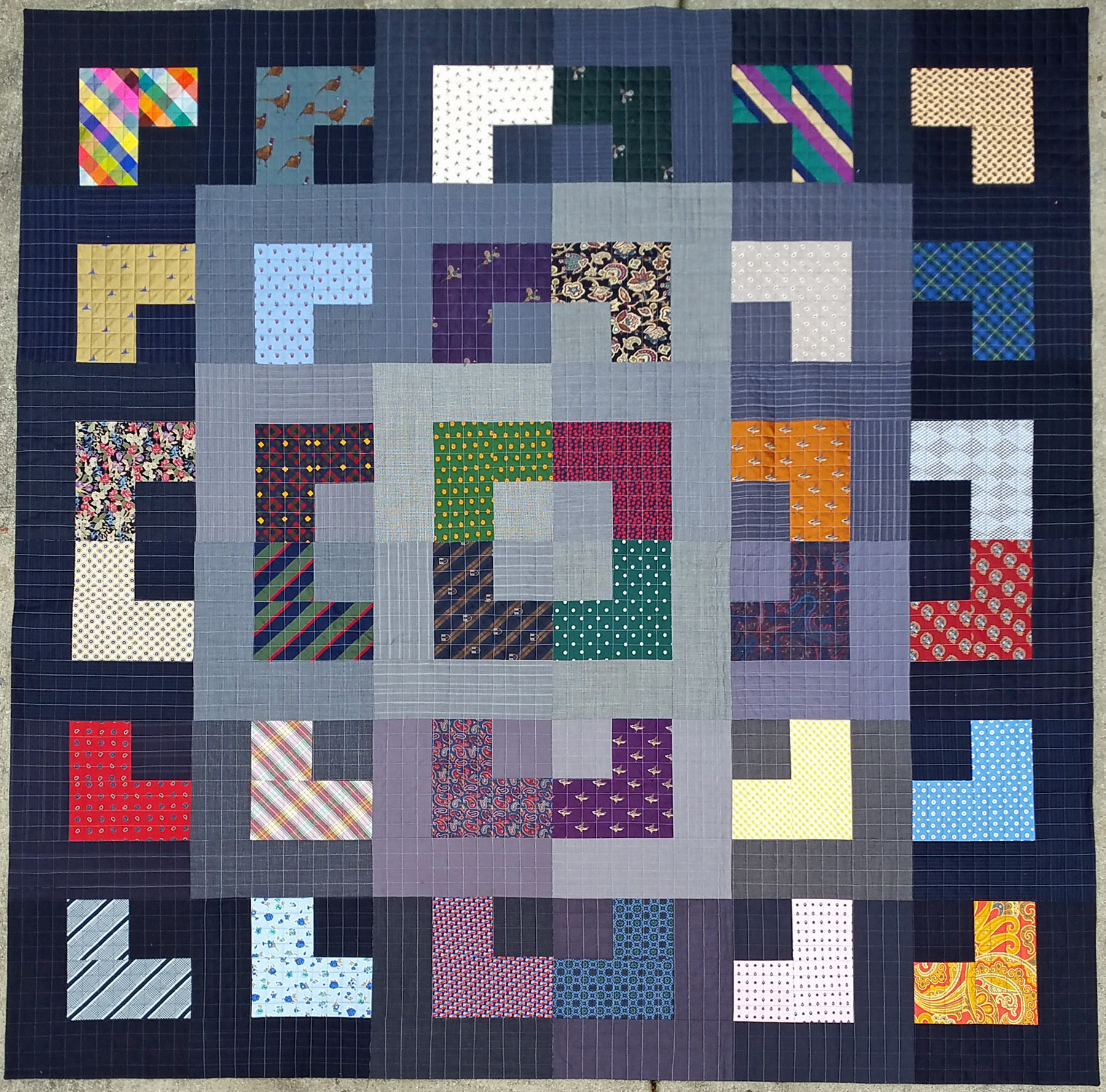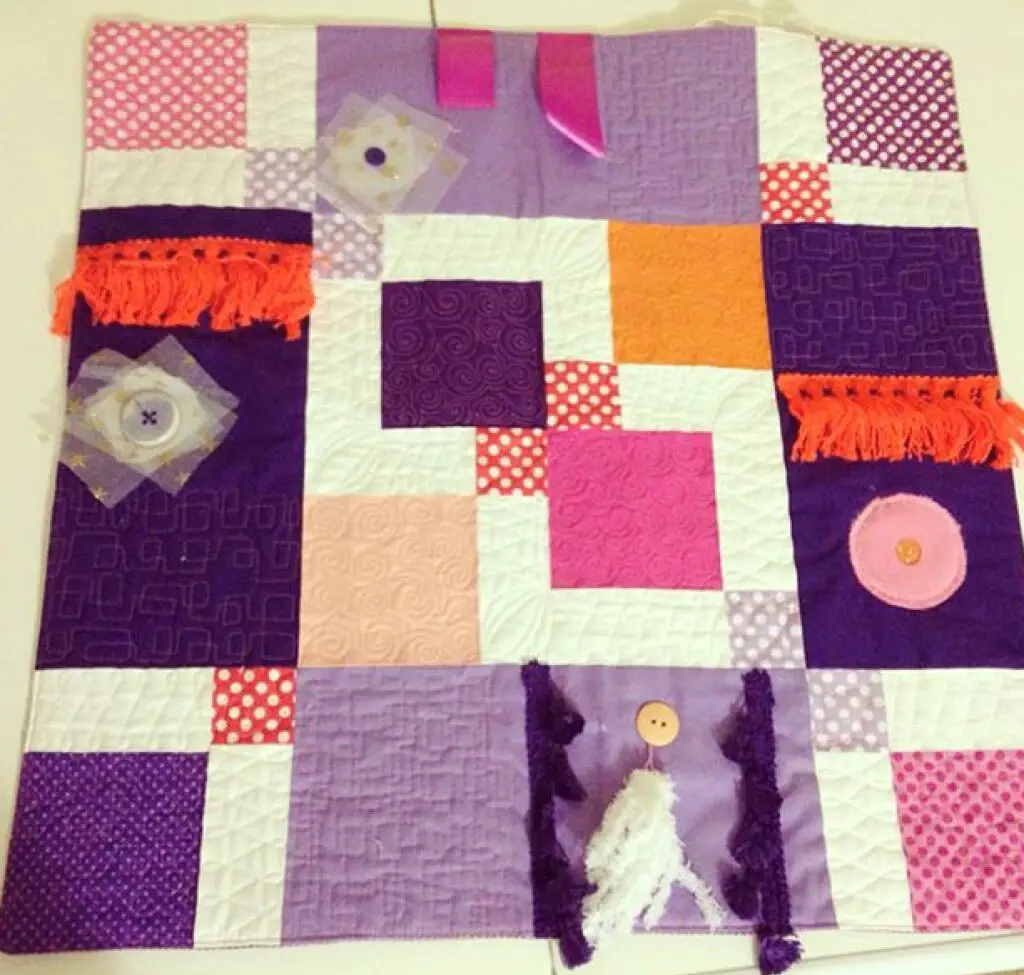Have you ever wanted to make a fidget quilt to help calm and focus your mind? A fidget quilt is a fabric quilt made up of multiple textures and shapes that can be used to provide tactile stimulation to the user. In this step-by-step guide, you will learn how to make a fidget quilt using fabric, batting, and other materials. These instructions will help you make a fidget quilt that is both functional and enjoyable to use.
Preparation

Gather Materials
To begin making a fidget quilt, you’ll need to gather the materials you’ll need. You’ll need a selection of fabrics, such as cotton, fleece, felt, and calico. You’ll also need a selection of objects such as buttons, ribbons, bells, and other tactile items.
Determine Size
Once you know what materials you’re working with, you’ll need to determine the size of your fidget quilt. Consider the size of the objects you’ll be attaching, as well as the size of the person who will be using the quilt. Your quilt should be large enough to cover the user’s lap.
A fidget quilt is a quilt filled with different textures and objects that provide a sensory input for those with conditions such as autism, dementia, or anxiety. This type of quilt can be used for calming and focusing purposes.
Step-by-Step Instructions
Assemble the Quilt Top
Cut the fabric for the quilt top into a variety of sizes and shapes. Use a variety of medium to large-scaled prints, and a few solid fabrics. Lay out the pieces on the floor or a large table, arranging them in a pleasing pattern. Sew the pieces together with a straight stitch and a ¼” seam allowance. Press the seams open.
Sew the Borders
Cut strips of fabric for the quilt borders. Typically, a quilt has four borders, two side borders and two top and bottom borders. Measure the quilt top and cut the border strips to the correct length. Sew the borders to the quilt top using a ¼” seam allowance. Press the seams open.
Make a Fidget Item
Choose one or more items to sew onto the quilt. Most commonly, a pocket is sewn onto one corner of the quilt to hold items such as a worry stone, a stuffed animal, or a stress ball. Other options include loops with tags, ribbons, or beads. Sew the items onto the quilt top with a straight stitch.
Make the Backing
Cut the backing fabric to the same size as the quilt top. Place the quilt top batting-side up on a large, flat surface. Place the backing fabric wrong-side up on top of the quilt top. Pin the three layers together.
Quilt the Layers
Quilt the layers together. To make a fidget quilt, use a variety of quilting stitches, such as a wandering stitch, a free-motion stitch, a cross-hatch stitch, or a stippling stitch. Use a variety of colors and textures of thread.
Sew the Binding
Cut strips of fabric for the binding and sew the strips together to make one long strip. Sew the binding to the edge of the quilt with a ½” seam allowance. Fold the binding over the edge of the quilt and hand-stitch it to the back of the quilt.
Fidget quilts are usually a small size, typically no more than 12″ x 12″. But depending on what type of fidget item is being added, the size of the fidget quilt can vary.
Frequently Asked Questions
What Types of Materials Do I Need to Make a Fidget Quilt?
Fabric:
- Quilt batting
- Cotton fabric for the top and backing
- Fleece for the backing
- Various trims, ribbons, and laces for added texture
Embellishments:
- Buttons
- Bells
- Zippers
- Velcro
- Ribbons
- Laces
- Feathers
- Ric Rac
- Rickrack
- Beads
- Sequins
Notions:
- Thread
- Sewing machine
- Sewing needles
- Fabric scissors
- Pins
- Iron and ironing board
How long does it take to make a Fidget Quilt?
Materials Gathering:
- 1-2 hours to gather materials such as fabric, batting, ribbons, felt, buttons, zippers, Velcro, etc.
Cutting and Measuring:
- 1-2 hours to measure and cut the fabric, batting and other material.
Sewing:
- 2-4 hours to sew the quilt top, batting, and backing together.
- 1-2 hours to sew on the embellishment, such as ribbons, buttons and zippers.
Finishing and Binding:
- 1-2 hours to attach the binding to the quilt.
Total Time: 6-10 hours.
How can I customize my Fidget Quilt?
- Choose a Color Scheme: Pick a color scheme that reflects your personality and create a mood board to make your fidget quilt stand out.
- Design Your Layout: Choose a pattern and layout for your fidget quilt to make it look attractive. Utilize different sizes, shapes, and textures to create a visually appealing quilt.
- Choose Fabrics: Select fabrics based on the pattern and layout chosen. Select fabrics that are soft and easy to work with. Consider using a variety of fabrics such as cotton, silk, and wool.
- Add Accessories: Incorporate embellishments such as buttons, ribbons, and beads to make your fidget quilt unique. These accessories will not only make the quilt look attractive but also add weight, which helps to provide a calming effect.
- Select Fidget Items: Add items such as beanbags, fabric strips, and other sensory items to your fidget quilt. These items will provide tactile stimulation, which can be calming to those who experience anxiety.
Is a Fidget Quilt Suitable for Different Age Groups?
Fidget quilts are designed to help individuals cope with anxiety and stress. These tactile blankets provide sensory input and stimulation, helping to calm and focus the user. They are suitable for a variety of age groups and can be adapted to the needs of the user.
Benefits of Fidget Quilts for Different Age Groups:
- Toddlers: Fidget quilts help to provide toddlers with sensory input, aiding in their development and aiding in their ability to focus.
- Children: Fidget quilts can help children learn to express themselves, as well as help them stay focused and relaxed during stressful situations.
- Adults: Fidget quilts can help adults focus and reduce anxiety, as well as provide a sense of comfort and security.
- Seniors: Fidget quilts can provide seniors with a sense of comfort, helping to stimulate their minds and providing a way to express themselves.
Fidget quilts are a great way to provide sensory input and stimulation for a variety of age groups. They can be adapted to meet the needs of the user and provide a sense of comfort and security. Fidget quilts can be made with a variety of materials and textures, making them suitable for any age group.
Are Fidget Quilts Machine Washable?
Fidget quilts are typically made from fabrics that can be machine washed, such as cotton, fleece, velvet, and minky fabrics. However, it’s important to note that some quilts may have buttons, ribbons, and other embellishments that may not be able to withstand the wash cycle. Therefore, it’s important to check labels and consult with the fabric manufacturer before laundering. In general, it’s best to hand wash or spot clean any fidget quilts to prevent damage to the fabric and embellishments.
Conclusion
Fidget quilts are a great way to help children with ADHD, autism, and other special needs focus better and feel more secure. With a few pieces of fabric, felt, and stuffing, you can create a fidget quilt your child will love. By following the steps outlined in this guide, you’ll be able to make a fidget quilt that can provide comfort and help your child stay focused.






